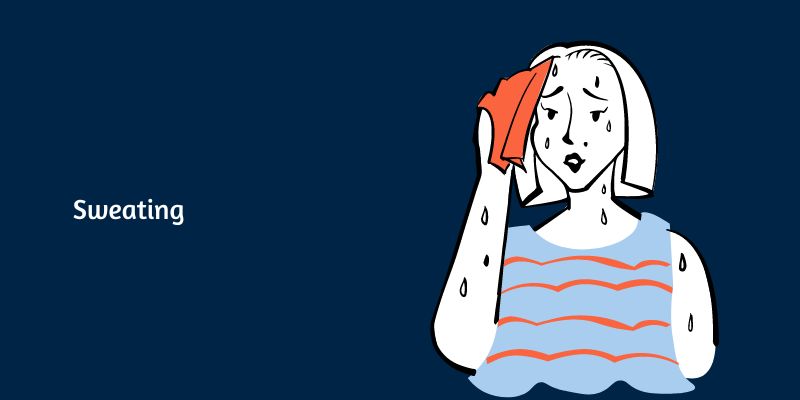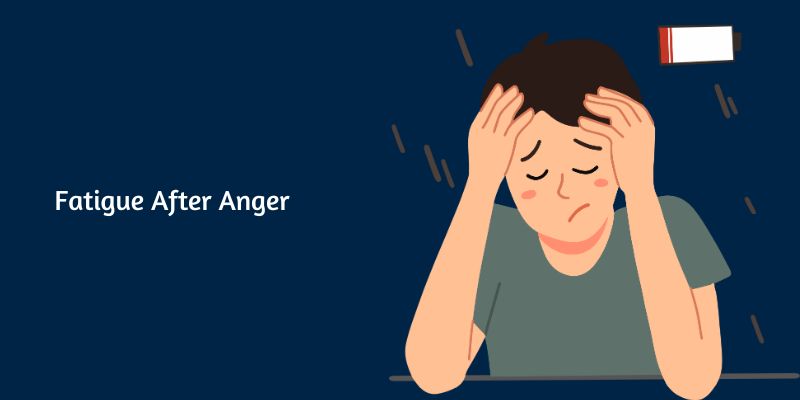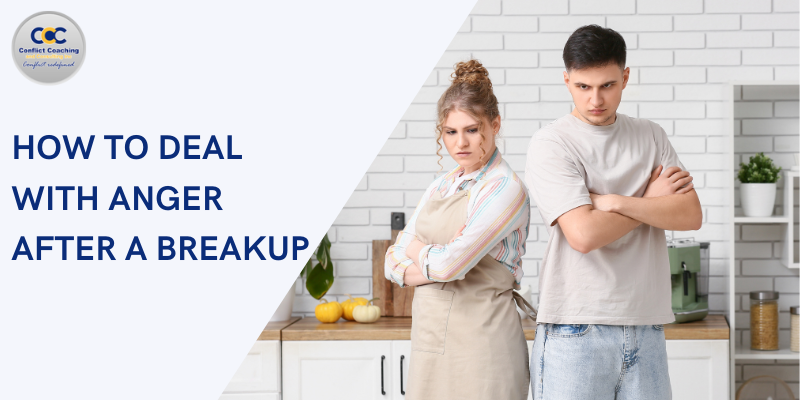
Anger Issues: Causes, Symptoms and Management
Anger is a natural and essential emotion that everyone experiences occasionally. It can help us identify when something is wrong, motivate us to solve problems, and even protect us in dangerous situations.
However, when anger becomes intense, frequent, or uncontrollable, it can lead to serious problems in our personal and professional lives.
Understanding anger issues is crucial because they can significantly impact our well-being and those around us.
Unmanaged anger can damage relationships, harm our health, and create a cycle of negative behavior that’s hard to break.
Anger issues can manifest in various ways, from explosive outbursts to constant irritability. Recognizing the causes and symptoms of anger issues is the first step toward managing them effectively.
Many factors can contribute to anger issues, including stress, trauma, mental health conditions, and environmental influences.
By identifying these underlying causes, you can better understand your triggers and learn healthier ways to control.
Addressing anger issues involves different types of anger, such as passive-aggressive behavior, chronic anger, and volatile anger. Each type requires a unique approach to anger management.
Effective treatments can range from self-help techniques like mindfulness and relaxation exercises to professional help through therapy and medication.
This blog will explore what anger issues are, along with their causes, symptoms, and management strategies. By understanding this complex emotion more deeply, you can control your anger, improve relationships, and enhance your overall quality of life.
What Are Anger Issues?
Anger issues refer to the inability to control anger in a healthy way, resulting in frequent, intense, or inappropriate expressions of anger.
While anger itself is a normal and often useful emotion, it becomes problematic when it leads to destructive behavior, negatively affects relationships, or harms one’s physical and mental health.
Anger issues can manifest in various forms, such as chronic irritation, explosive outbursts, or passive-aggressive behavior.
Uncontrolled anger can escalate quickly and disproportionately to the situation at hand, often leaving individuals feeling regretful and others feeling hurt or threatened.
This persistent and intense anger can stem from various underlying causes, including stress, trauma, frustration, or even certain mental health conditions like anxiety or depression.
Mentally, unmanaged anger is linked to increased levels of stress, anxiety, and depression. The study emphasizes the importance of addressing anger issues for emotional well-being and overall health.
Recognizing when anger becomes problematic is the first step towards seeking help and finding effective ways to manage it.
Understanding the triggers and learning healthier ways to respond can improve relationships, reduce stress, and enhance one’s quality of life.
What Causes Anger Issues?
Anger issues can arise from a variety of triggers and underlying disorders. Understanding the causes of anger is crucial for effective management.
Anger can be a response to external factors, such as stressful environments or difficult relationships, but it can also stem from internal factors like mental health conditions and unresolved trauma.
Identifying these causes helps us address the root of the problem rather than just the symptoms, leading to healthier emotional responses and better overall well-being.
Depression
Depression is commonly associated with sadness and lethargy, but it can also manifest as irritability and anger. Individuals with depression may experience intense frustration and a short temper, often feeling overwhelmed by everyday tasks.
This anger can be a way of expressing the inner turmoil and helplessness that comes with depression. Recognizing this link can help in addressing both the depressive symptoms and the accompanying anger.
Obsessive-Compulsive Disorder
Obsessive-compulsive disorder (OCD) involves unwanted, persistent thoughts (obsessions) and repetitive behaviors (compulsions). These symptoms can cause significant distress and frustration, leading to anger.
People with OCD might feel angry when their routines are disrupted or when they cannot perform their compulsive behaviors. This anger can further exacerbate the stress and anxiety associated with OCD.
Alcohol Misuse
Alcohol misuse is strongly linked to increased aggression and anger. Alcohol lowers inhibitions and impairs judgment, making it more likely for individuals to react angrily in situations that they might otherwise handle calmly.
Chronic alcohol use can also lead to long-term changes in brain chemistry, further contributing to anger and aggression. Understanding this connection is key to addressing both alcohol misuse and related anger issues.
Attention Deficit Hyperactivity Disorder
Attention deficit hyperactivity disorder (ADHD) is characterized by inattention, hyperactivity, and impulsivity. These symptoms can lead to frequent frustration and anger, especially when tasks are challenging or difficult to focus.
Individuals with ADHD may have trouble managing their emotions, resulting in quick tempers and outbursts. Addressing ADHD symptoms through therapy and medication can help reduce associated anger.
Oppositional Defiant Disorder
Oppositional defiant disorder (ODD) involves a pattern of angry, irritable moods, argumentative behavior, and defiance towards authority figures.
Children and adolescents with ODD often exhibit frequent temper tantrums and a persistent pattern of anger and resentment. This behavior can lead to significant conflicts at home and school. Early intervention and therapy can help manage the symptoms and reduce anger.
Bipolar Disorder
Extreme mood swings, including manic and depressive episodes, characterize bipolar disorder. During manic phases, individuals may experience heightened irritability and impulsive anger.
Depressive phases can also bring about irritability and frustration. These mood shifts can make it challenging to maintain stable relationships and manage daily life. Treatment for bipolar disorder can help stabilize moods and reduce anger outbursts.
Intermittent Explosive Disorder
Intermittent explosive disorder (IED) is marked by sudden, intense outbursts of anger and aggression that are disproportionate to the situation.
These episodes can involve physical violence, verbal aggression, and property damage. Individuals with IEDs often feel a sense of relief after an outburst but may later feel remorseful.
Understanding and treating IED involves therapy and sometimes medication to help manage impulses.
Grief
Grief is a natural response to loss and can involve several stages, including denial, anger, bargaining, depression, and acceptance.
The anger stage can manifest as frustration, resentment, and even rage. This anger may be directed towards oneself, others, or the situation causing the loss.
Recognizing that anger is a normal part of the grieving process can help individuals cope and eventually move toward healing.
Anxiety Disorders
Anxiety disorders, including generalized anxiety disorder (GAD), social anxiety, and panic disorder, often involve excessive worry and fear.
This constant state of anxiety can lead to irritability and anger as individuals feel overwhelmed by their fears and stressors.
Learning to manage anxiety through therapy, relaxation techniques, and medication can help reduce the anger associated with these disorders.
Trauma and PTSD
Post-traumatic stress disorder (PTSD) can develop after experiencing a traumatic event. Symptoms include flashbacks, nightmares, and severe anxiety, which can contribute to intense anger and aggression.
Individuals with PTSD may feel constantly on edge and react angrily to triggers that remind them of their trauma. Therapy, including cognitive-behavioral therapy (CBT) and EMDR, can help process trauma and manage anger.
Personality Disorders
Personality disorders, such as borderline personality disorder (BPD) and narcissistic personality disorder (NPD), can significantly impact how individuals experience and express anger.
BPD is characterized by intense and unstable emotions, leading to frequent anger and conflict in relationships.
NPD involves a heightened sense of self-importance and sensitivity to criticism, often resulting in angry responses to perceived slights. Understanding these patterns can help in developing strategies to manage anger effectively.
Chronic Pain or Illness
Chronic pain or illness can lead to persistent frustration and irritability as individuals cope with ongoing discomfort and limitations.
This constant physical strain can wear down emotional resilience, making anger a common response to daily challenges.
Addressing the pain through medical treatment and learning coping strategies can help manage the associated anger.
Environmental Factors
Environmental factors such as stressful work environments, toxic relationships, and societal pressures can contribute significantly to anger issues.
Constant exposure to stress and negativity can weaken an individual’s ability to manage emotions, leading to frequent anger and frustration.
Identifying and addressing these environmental triggers, whether through lifestyle changes, relationship counseling, or stress management techniques, can help reduce anger issues.
Understanding these causes of anger is essential for effective management. By recognizing the underlying triggers and contributing factors, individuals can address their anger in healthier and more productive ways.
Symptoms of Anger Issues
Understanding these symptoms can help individuals recognize the signs of anger issues and take steps to manage their anger more effectively.
When anger takes hold, the body responds with physical changes. These symptoms are often immediate and can be quite intense.
Increased Heart Rate

When anger arises, one of the first physical symptoms many experience is an elevated heart rate. This is part of the body’s automatic “fight-or-flight” response, designed to prepare you for a perceived threat.
Your brain sends signals to the adrenal glands, releasing adrenaline and other stress hormones into the bloodstream.
These hormones cause the heart to beat faster to supply more oxygen to the muscles, preparing your body to either confront or flee from the source of anger.
In situations of intense anger, you may feel your heart pounding or racing, which can contribute to feelings of agitation or restlessness.
Prolonged episodes of increased heart rate due to frequent anger can negatively affect cardiovascular health.
Chronic anger or stress may increase the risk of developing hypertension or heart disease over time. This makes managing your anger not just a psychological need but also a physiological one.
Understanding how your body responds to anger can help you learn techniques to slow down your heart rate, such as deep breathing or mindfulness.
Elevated Blood Pressure

Anger can cause your blood pressure to spike, as it triggers the release of stress hormones that constrict blood vessels and cause your heart to work harder.
Elevated blood pressure, also known as hypertension, happens because the body’s fight-or-flight mechanism is designed to prepare for physical exertion.
The surge in hormones like adrenaline narrows your arteries, increasing the force with which your blood is pushed through them. This results in elevated pressure within your circulatory system.
In the short term, spikes in blood pressure can lead to dizziness, headaches, or a sensation of pressure in the head. If anger occurs frequently, long-term effects can be much more serious.
Chronic high blood pressure increases the risk of heart disease, stroke, and kidney problems.
It is essential to develop strategies to manage emotional triggers, as frequent episodes of anger can contribute to long-term hypertension.
Tensed Muscles

One of the most immediate physical responses when anger strikes is the tensing of muscles.
This reaction is part of the body’s natural defense mechanism, preparing you to fight or flee from a perceived threat.
The muscles, particularly those in the neck, shoulders, and back, tighten as the brain signals the body to prepare for action.
Over time, if the anger is prolonged or not managed, these muscles can stay tense, leading to chronic pain or discomfort.
Muscle tension during anger can also lead to other physical issues, such as headaches or tension-related aches in the body.
For example, clenched fists or a clenched jaw, common during moments of anger, may result in soreness or even temporomandibular joint (TMJ) issues. This ongoing strain can also limit movement and flexibility, leading to stiffness in the neck or back.
Learning relaxation techniques such as progressive muscle relaxation (PMR), stretching, or yoga can help alleviate muscle tension when angry.
Clenched Fists or Jaw

A clenched fist or jaw is one of the most noticeable and involuntary physical reactions to anger.
Clenching the fists can be a symbolic gesture of frustration, aggression, or readiness to fight.
Similarly, a clenched jaw prepares the body for confrontation, and many people don’t realize they’re doing it.
If prolonged or repeated often, this physical response can lead to physical discomfort or injury.
Clenching the jaw for long periods can contribute to tension headaches, jaw pain, or temporomandibular joint (TMJ) disorders.
In the case of clenched fists, constant tension can cause sore or stiff fingers and knuckles, which can have a longer-term impact if left unchecked.
Recognizing when you’re clenching your fists or jaw is the first step toward defusing the physical intensity of anger.
Flushed Face or Neck
A flushed face or neck is a common physical symptom of anger, often resulting from the body’s release of adrenaline.
As your heart rate increases and blood pressure rises, blood vessels near the skin’s surface dilate, causing increased blood flow to the face and neck.
This can make your skin appear red or flushed, which can be an embarrassing side effect in social situations. The redness can spread to the chest or ears, making it clear to others that you’re experiencing strong emotions.
The sensation of a flushed face is often accompanied by a feeling of heat as if the skin itself is warming up. This can amplify the sense of discomfort, contributing to feelings of frustration or irritation.
Some people might become more self-conscious about their flushed appearance, further escalating their emotional state.
Although a flushed face typically subsides once anger is under control, frequent episodes of anger can exacerbate conditions like rosacea, where facial redness becomes chronic.
Shaking or Trembling
Shaking or trembling is a common physical symptom of anger, and it occurs as part of the body’s increased state of arousal during a fight-or-flight response.
When you’re angry, the body releases adrenaline, a hormone that prepares your muscles for action.
This surge of adrenaline can cause the muscles to contract and relax rapidly, leading to shaking or trembling, especially in the hands or legs.
Trembling can make you feel like you are losing control of your physical state, which may exacerbate anger or frustration.
It can be particularly unsettling if you’re in a situation where you feel you need to maintain composure, as the shaking may feel visible or hard to suppress.
The more intensely angry you are, the more pronounced the trembling might become, and it may even last for several minutes after the anger subsides.
Deep breathing, progressive muscle relaxation, or gently shaking your arms and legs can help release tension.
Sweating

Sweating is a common reaction to anger, as the body activates its fight-or-flight response. Anger triggers the sympathetic nervous system, stimulating the sweat glands, particularly in the face, palms, and underarms.
This sweating occurs because the body is preparing for a potentially stressful or threatening situation in which physical exertion may be necessary.
In such cases, sweating helps regulate body temperature as your heart rate increases and muscles prepare for action.
While sweating can be a natural part of anger, it can also be uncomfortable or embarrassing, especially in social settings.
Palms may become clammy, or you might notice perspiration beading on your forehead. Excessive sweating can sometimes intensify feelings of frustration, as it may make you more aware of your anger and add to your discomfort.
Cooling techniques like drinking water or a cold compress can help manage sweating during anger.
Rapid Breathing
Rapid breathing, or hyperventilation, is a common physical symptom of anger, often tied to the body’s fight-or-flight response.
When you’re angry, your body releases stress hormones like adrenaline, which increases your heart rate and quickens your breathing.
The body is trying to take in more oxygen to prepare the muscles for physical action, whether to defend itself or escape the source of anger.
This can make your breaths shallow and fast, leaving you feeling out of breath or dizzy.
Hyperventilation can exacerbate feelings of panic, anxiety, or anger by disrupting the balance of oxygen and carbon dioxide in the body.
This imbalance can cause lightheadedness, tingling in the fingers or lips, or even fainting in extreme cases.
The sensation of rapid breathing often creates a feedback loop, making it harder to calm down, as the fast breaths signal to the brain that you’re still in an increased emotional state.
Slowing down your breaths and focusing on taking air into your diaphragm instead of your chest can help reset your body’s response to anger.
Dizziness or Lightheadedness

Feeling dizzy or lightheaded is another physical symptom that can accompany anger.
This sensation often stems from hyperventilation, where rapid, shallow breathing reduces the amount of carbon dioxide in the blood, leading to lightheadedness.
Additionally, the adrenaline rush during anger causes blood vessels to constrict, redirecting blood to essential organs and muscles, which may leave less blood flowing to the brain, contributing to dizziness.
This symptom can be disorienting, making it harder to think clearly or control your actions. You might feel as though you’re not fully grounded, which can escalate the emotional intensity you’re already experiencing.
Sometimes, dizziness can lead to a sense of physical instability, increasing your frustration or anxiety about the situation. It may also result in a headache or blurred vision, further complicating your ability to manage anger.
To counteract dizziness, it’s essential to slow down your breathing and practice grounding techniques that help calm the body’s fight-or-flight response.
Headaches
Headaches are a common physical symptom of anger, often resulting from the tension and stress placed on the body during emotional arousal.
Anger can cause neck, shoulders, and scalp muscles to tighten, leading to tension headaches.
These headaches usually manifest as a dull, aching pain, often described as a band-like pressure around the forehead or the back of the head.
The increased release of stress hormones during anger can also contribute to headaches, as elevated blood pressure and rapid heart rate intensify the body’s overall strain.
In some cases, individuals prone to migraines may experience them more frequently during times of anger or emotional stress, as the changes in blood pressure and muscle tension can trigger or worsen their condition.
If headaches become frequent or severe due to anger, it’s essential to develop strategies to manage both the physical and emotional triggers.
Stretching exercises, especially those targeting the neck and shoulders, can relieve muscle tightness, leading to headaches.
Stomach Discomfort

Stomach discomfort is a well-known physical symptom of anger, often manifesting as a “knot in the stomach,” nausea, or even digestive issues.
The body’s fight-or-flight response redirects blood from the digestive system to the muscles and brain as the body prepares for physical action.
This reduction in blood flow can interfere with normal digestion, leading to discomfort or pain in the stomach.
Additionally, the release of stress hormones like cortisol can further disrupt the digestive process, causing symptoms such as indigestion, cramps, or acid reflux.
For some people, anger may exacerbate pre-existing digestive conditions such as irritable bowel syndrome (IBS) or ulcers.
Chronic anger or frequent episodes of rage can worsen these issues as the digestive system struggles to cope with the repeated interruption of its normal functioning.
The stomach’s sensitivity to emotional states indicates the mind-body connection, and unmanaged anger can lead to long-term gastrointestinal problems.
Drinking water, avoiding heavy meals during anger, and incorporating stress-relieving physical activities can promote better digestion and reduce stomach discomfort.
Dry Mouth
A dry mouth is another common physical symptom of anger, often as part of the body’s stress response.
When anger triggers the fight-or-flight reaction, the body shifts from non-essential functions, such as digestion and saliva production, to preparing for action.
As a result, the salivary glands may temporarily stop producing saliva, leading to a dry, uncomfortable sensation in the mouth.
This dryness can make speaking or swallowing more difficult, adding to the frustration or agitation you may already be feeling.
A dry mouth may also be accompanied by other physical symptoms, such as a feeling of heat in the face or sweating, as these are all part of the body’s attempt to manage the increased state of arousal.
While it’s temporary, a dry mouth can be distracting, making it harder to express your feelings or articulate thoughts clearly during moments of anger.
Sipping water, chewing gum, or sucking on a lozenge can provide some relief from dry mouth during or after about of anger.
Fatigue after Anger

Many people feel physical and mental fatigue after experiencing intense anger.
Anger triggers a cascade of physiological responses, including releasing adrenaline and other stress hormones, increased heart rate, and muscle tension.
Once these increased responses subside, the body may feel drained, as if it quickly used significant energy. This “anger hangover” can exhaust you, even if the emotional episode is brief.
Fatigue after anger can also manifest mentally. During moments of anger, cognitive resources are often focused on the emotional experience, leaving little mental energy for other tasks.
Once the anger passes, you may feel mentally spent, making it difficult to concentrate or decide.
This fatigue can last for hours or even a full day, depending on the intensity of the anger and the person’s stress tolerance.
To recover from post-anger fatigue, it’s helpful to rest and engage in activities that restore both physical and mental energy. Taking a nap, stretching gently, or engaging in a calming hobby can help the body and mind recover.
Irritability
Irritability is one of the most common emotional symptoms of anger. It manifests as an enhanced sensitivity to minor inconveniences or annoyances, often causing a person to become easily frustrated.
When irritable, you may react to small triggers that you might otherwise ignore, snapping at others or feeling impatient with situations that typically wouldn’t bother you.
This emotional state can be exhausting for the person experiencing it and those around them, leading to tension in relationships and a general sense of discomfort.
Irritability is often a sign that underlying emotions are building up, such as stress, frustration, or unresolved conflicts. It can escalate into more intense anger or other emotional outbursts when not addressed.
For example, irritable people might have trouble managing their tone or body language, leading to misunderstandings or arguments. This creates a negative feedback loop where irritability fuels more frustration and anger, making it harder to calm down.
Identifying irritability’s sources, such as stress or fatigue, is essential to managing it and finding ways to address it.
Developing self-awareness around irritability also enables you to catch it early, preventing it from escalating into more severe anger or emotional strain.
Resentment

Resentment is a lingering emotional symptom of anger, characterized by holding onto negative feelings toward a person or situation that caused hurt, frustration, or injustice.
Unlike immediate bursts of anger, resentment builds up over time, often festering as unresolved anger.
When you feel resentful, you may replay the situation that upset you in your mind, deepening the emotional wound and making it harder to move forward.
Resentment often arises when you feel wronged, betrayed, or taken advantage of but lack the opportunity or means to express your anger or resolve the issue.
For example, in relationships, someone might feel resentful if they believe their efforts go unappreciated or constantly criticized. This unresolved anger can simmer beneath the surface, leading to passive-aggressive behavior or emotional distancing.
Resentment can poison relationships and affect mental well-being. Holding onto resentment can lead to bitterness, stress, and even physical health problems, such as headaches or sleep disturbances.
Frustration
Frustration is an emotional symptom of anger that arises when obstacles block your ability to achieve goals or desires. It often occurs when you feel thwarted by circumstances, other people, or internal limitations.
Frustration builds when progress is stifled, leading to a sense of powerlessness or inadequacy.
For example, you may feel frustrated when working on a project that isn’t going as planned or when you’re unable to communicate effectively with someone during an argument.
Frustration tends to escalate anger, as the more obstacles you encounter, the more intense your emotional state becomes.
Left unchecked, it can lead to irritability, outbursts, or more aggressive behavior as the mind seeks to overcome the barriers causing distress.
Frustration can also cause negative self-talk, as you may start doubting your abilities or feel overwhelmed by the situation.
It helps to take a step back and assess the situation from a new perspective to manage frustration. Breaking tasks into smaller, more manageable steps can reduce feeling overwhelmed.
Anxiety

Anxiety often accompanies anger, especially when anger stems from a situation that feels uncertain or uncontrollable.
When you’re angry, you may also feel anxious about the consequences of your emotions, how others will react, or whether the issue will be resolved.
This blend of anger and anxiety can create an increased emotional state where you feel both agitated and worried at the same time.
The anxiety may stem from concerns about the future, fear of confrontation, or uncertainty about the situation.
Anxiety can also occur when anger is suppressed rather than expressed. Instead of addressing the source of the anger, you may bottle it up, leading to an internal sense of unease.
This unresolved tension can manifest as anxiety, affecting your ability to focus, sleep, or engage in daily activities. Over time, this anxiety may even evolve into chronic stress or other mental health concerns.
Managing anxiety related to anger involves both addressing the anger itself and practicing techniques to reduce anxiety, such as mindfulness, meditation, or deep breathing exercises.
Addressing the root causes of anxiety can help you feel more in control and less overwhelmed by anger.
Rage
Rage is an extreme and intense form of anger characterized by uncontrollable emotions. It often feels overwhelming and can lead to aggressive behavior, shouting, or physical confrontations.
Unlike moderate anger, which can be managed or expressed constructively, rage is typically a loss of emotional control.
It can be triggered by events that provoke deep frustration, hurt, or perceived injustice, causing emotions to spiral out of control rapidly.
When in a state of rage, logical thinking becomes difficult as the emotional brain takes over, shutting down the ability to process rationally.
Rage tends to amplify the emotional response far beyond the actual issue at hand, leading to actions or words that are regretted later.
Rage can also have lasting physical effects, as the body experiences a surge of adrenaline, increased heart rate, and muscle tension.
Because rage can harm yourself and others, it’s important to recognize early warning signs before it escalates.
Hostility

Hostility is a persistent emotional state in which a person harbors negative, defensive, or antagonistic attitudes toward others.
Unlike fleeting anger, hostility is more enduring and can become a default emotional response to many situations.
Hostile people may approach interactions with a readiness to argue or challenge others, often expecting conflict or viewing others as threats.
Hostility can cause anger, as mistrust or frustration toward others fuels a defensive stance. It can manifest in verbal aggression, sarcasm, or passive-aggressive behavior, creating barriers to personal and professional relationships.
Hostility often builds over time due to unresolved grievances, perceived slights, or ongoing stress, making it difficult for individuals to form healthy relationships.
Over time, this emotional stance can affect others and create a cycle of negative interactions, reinforcing anger and resentment.
Reducing hostility can improve relationships and overall emotional well-being, creating a more positive and cooperative environment.
Impatience
Impatience is an emotional symptom of anger that reflects an inability to tolerate delays, obstacles, or slow progress.
When you’re impatient, you may feel an urgent need for things to happen immediately, and when they don’t, frustration and anger quickly set in.
Impatience can arise in various situations, such as waiting in line, dealing with traffic, or interacting with someone who isn’t responding as quickly as you’d like.
It’s often fueled by high expectations or a lack of control over the situation.
Impatience can lead to impulsive actions or unkind words, as the emotional pressure to “speed things up” overrides logical thinking.
This can strain relationships and create a tense atmosphere in situations that require cooperation or understanding.
Impatience often goes hand-in-hand with irritability, as both emotions feed off the sense of being hindered or slowed down.
Managing impatience involves practicing mindfulness and accepting that not everything happens on your timeline.
Developing patience as a skill can reduce anger and help you approach situations with more calm and flexibility.
Bitterness
Bitterness is an emotional symptom of anger that stems from unfairness, betrayal, or unresolved resentment.
When someone feels bitter, they hold onto negative emotions over time, often long after the initial incident that triggered the anger.
This emotion can create a pervasive dissatisfaction or cynicism, coloring how people view their relationships or the world around them.
Bitterness often results from feeling wronged or hurt in a way that hasn’t been resolved, leaving the emotional wound to fester.
People experiencing bitterness may struggle to relinquish past grievances, frequently revisiting old arguments or perceived slights.
This emotional state can lead to distrust, distance from others, or a sense that life is inherently unfair.
Bitterness can also contribute to a negative outlook, where the person anticipates future hurts or disappointments, further fueling anger.
Addressing bitterness requires actively releasing unresolved anger and practicing forgiveness toward others or oneself. It may also involve reframing past events to find closure or a sense of understanding.
Feeling Overwhelmed
Feeling overwhelmed is an emotional response to anger that occurs when the intensity of your emotions becomes too much to handle.
In moments of anger, especially if the situation feels complex or involves multiple triggers, you might experience a flood of emotions that leave you powerless or out of control.
This emotional overload can make thinking, focusing on solutions, or even processing your feelings difficult.
When overwhelmed, you may also experience a sense of emotional paralysis, where the anger feels so big that it’s hard to take any productive action.
This can lead to increased frustration, anxiety, or even physical symptoms like headaches or muscle tension.
Additionally, being overwhelmed by anger can cause emotional outbursts or impulsive reactions, which may further complicate the situation and cause regret later.
Managing feeling overwhelmed by anger requires taking small, manageable steps to regain control.
Over time, building emotional resilience and developing strategies to handle intense emotions can help prevent the feeling of being overwhelmed from taking hold.
Guilt
Guilt often follows episodes of anger, particularly when your anger causes harm to others or leads to actions you later regret.
After an angry outburst, you may feel guilty about how you behaved, the words you used, or how your anger impacted your relationships.
This guilt can be a powerful emotional consequence of anger, forcing you to confront the gap between your actions and your values.
Guilt serves as an internal signal that something went wrong, pushing you to reflect on your behavior and its consequences.
While guilt can be productive in helping you recognize the need to apologize or make amends, excessive guilt can also be paralyzing, leading to self-blame or feelings of inadequacy.
If not addressed, lingering guilt can create a cycle of anger and regret, where unresolved feelings from the initial incident continue to fester.
Taking responsibility for your actions and practicing self-compassion is essential to manage guilt after anger.
Honest apology, making amends, and learning from the experience can help reduce guilt.
Shame

Shame is a deep and often painful emotional symptom of anger, particularly when you feel embarrassed or humiliated by your own behavior.
Unlike guilt, which focuses on specific actions, shame often involves feeling bad about yourself, as if your anger reveals something inherently flawed or wrong about you.
This can be especially difficult if your anger leads to public outbursts, hurtful words, or actions that damage your reputation or relationships.
Shame is a powerful emotion that can lead to withdrawal, isolation, or self-punishment, as you may feel undeserving of forgiveness or redemption.
The intense self-criticism associated with shame can fuel a negative self-image, making it harder to confront and resolve the anger that caused the shame in the first place.
In some cases, shame may even perpetuate further anger, as the emotional pain of feeling ashamed creates a sense of frustration or resentment toward yourself or others.
Addressing shame requires a combination of self-compassion and accountability. It’s important to recognize that everyone makes mistakes and that anger does not define one’s worth.
Vindictiveness
Vindictiveness is an emotional symptom of anger manifesting as a desire for revenge or retaliation against someone who has wronged you.
When you’re feeling vindictive, your anger is not just about the initial hurt but also about getting even or causing harm to the person responsible.
This desire for revenge can consume, leading to thoughts or actions intended to hurt or punish the other party.
While the feeling of vindictiveness may provide temporary satisfaction, it often prolongs the cycle of anger and conflict.
Seeking revenge rarely leads to resolution or healing; instead, it tends to escalate the situation and cause further emotional harm.
Additionally, being vindictive can strain relationships, as the desire to “win” or “get back” at someone takes priority over constructive communication or reconciliation.
Focusing on the long-term consequences of acting on anger is essential to manage vindictive feelings.
Sadness or Regret
Sadness or regret often follows an episode of anger, especially when the anger has damaged a relationship or situation.
After the emotional intensity subsides, you may feel a sense of sorrow for what was said or done in the heat of the moment.
This sadness can be accompanied by feelings of loss, particularly if the anger has led to strained relationships, missed opportunities, or personal disappointment.
Regret is closely tied to sadness, reflecting a desire to undo or change the actions that caused harm.
When feeling regretful, you may wish you had handled the situation differently or been able to control your anger more effectively.
This emotional aftermath of anger can weigh heavily, especially if the consequences are significant or long-lasting.
Dealing with sadness or regret involves acknowledging the emotional impact of your anger and taking steps to make amends where possible.
Apologizing to those affected, reflecting on the causes of your anger, and learning new emotional regulation techniques can help reduce the likelihood of future regret.
Confusion

Confusion is a common emotional symptom of anger, especially when the source of the anger isn’t entirely clear or when multiple emotions are at play.
You may feel confused about why you’re angry, how to express it, or the appropriate response.
This confusion can make it difficult to communicate your feelings effectively, leading to misunderstandings or further frustration.
In some cases, confusion arises because anger is masking other emotions, such as hurt, fear, or sadness.
You may feel angry on the surface, but beneath that anger, there could be unresolved feelings that you haven’t fully processed.
This emotional complexity can make it challenging to understand your feelings and why.
Additionally, confusion may occur when you’re angry at yourself, others, or a situation, but you don’t know how to address the issue or find a solution.
Managing confusion related to anger involves taking time to reflect on your emotions and identify the underlying causes of your anger.
Gaining greater self-awareness can reduce confusion and develop healthier ways to process and express anger.
Emotional Numbness
Emotional numbness is an emotional symptom of anger that occurs when a person becomes detached or disconnected from their feelings.
This can happen when anger has been suppressed for too long, leading to an emotional shutdown.
Instead of feeling the intensity of anger or any other emotions, you may feel emotionally flat or indifferent, as if you’re unable to fully engage with your own feelings or the world around you.
Emotional numbness is often a defense mechanism, a way of coping with overwhelming emotions by shutting them down.
However, this detachment can prevent you from addressing the root causes of your anger, leaving unresolved issues to fester beneath the surface.
Over time, emotional numbness can lead to a sense of isolation, as it becomes difficult to connect with others or express your true feelings.
To manage emotional numbness, it’s essential to gradually re-engage with your emotions in a safe and supportive environment.
By addressing and working through the underlying anger, you can restore emotional balance and regain a sense of connection with yourself and others.
Feeling Powerless
Feeling powerless is an emotional symptom of anger when you believe you have little or no control over a situation.
This lack of control can lead to frustration, resentment, and a deep sense of helplessness, as you cannot change or influence the circumstances causing your anger.
When powerless, you may also experience feelings of defeat or inadequacy, amplifying your emotional response to the situation.
Powerlessness often accompanies situations where external factors, such as other people’s actions or decisions, dictate the outcome.
For example, you may feel powerless in a workplace conflict, where decisions are made without your input, or in a personal relationship, where you feel unheard or misunderstood.
This emotional state can intensify anger, as the combination of frustration and helplessness makes it harder to cope with the situation constructively.
It’s essential to focus on what you can control to overcome feelings of powerlessness, even if those aspects are small.
Additionally, seeking support from trusted friends or professionals can provide guidance and perspective, helping you regain control over your emotions and the situation.
Aggressiveness
Aggressiveness is an emotional symptom of anger that involves a desire to assert dominance, control, or force over a situation or person.
When feeling aggressive, you may act out in hostile, confrontational, or even physically violent ways.
This behavior is often fueled by intense anger and a need to protect yourself, assert your viewpoint, or retaliate against perceived threats or slights.
Aggressiveness can manifest in various forms, from verbal outbursts and insults to physical confrontations or intimidating body language.
It may also be expressed through passive-aggressive behaviors, where the hostility is less direct but still present.
While aggressiveness may feel empowering at the moment, it often leads to negative consequences, such as damaged relationships, increased conflict, and long-term emotional strain.
Managing aggressiveness involves recognizing the early signs of anger and finding healthier outlets for expressing it.
Learning assertiveness skills, which allow you to communicate your needs without resorting to hostility, can also reduce aggressive tendencies and improve emotional regulation.
By addressing the root causes of your anger and finding constructive ways to express it, you can prevent aggressiveness from taking over in difficult situations.
What Is Anger Management?
Anger management is the process of learning to recognize and control one’s anger effectively.
Rather than suppressing or avoiding the feeling, anger management teaches individuals how to respond to anger constructively, reducing the potential for it to lead to destructive behavior.
This skill set combines self-awareness, communication techniques, and relaxation strategies to help individuals manage their emotions in healthy and productive ways.
Through structured anger management programs or self-guided practices, people learn how to identify the sources of their anger, address triggers, and develop coping strategies.
These approaches improve relationships, reduce stress, and foster emotional resilience and greater overall well-being.
15 Anger Management Techniques
Let’s delve into 15 effective anger management strategies. Explore practical approaches to managing your anger constructively and fostering healthier relationships.
1. Acknowledge the Feeling
The first step in managing anger effectively is to acknowledge the feeling. Recognizing and accepting that you are angry is crucial for addressing it constructively.
Denying or suppressing anger can lead to more intense outbursts or chronic stress.
Here’s how to acknowledge your anger healthily:
- Pause and Reflect: When you feel anger rising, take a moment to pause. Stop whatever you’re doing and give yourself a brief break. This pause helps prevent immediate reactions and lets you think about what’s happening.
- Identify Triggers: Ask yourself what triggered your anger. Understanding the cause can help you address the root issue rather than just the symptoms. Triggers can be specific events, people, or internal thoughts and memories.
- Label the Emotion: Clearly labeling your emotion as “anger” helps you gain control over it. Say to yourself, “I am feeling angry because…” This simple act of naming the emotion can reduce its intensity and make it more manageable.
- Accept the Anger: Understand that anger is a natural and normal emotion. It’s okay to feel angry. Accepting this emotion without judgment helps reduce the stress of feeling like you shouldn’t be angry.
- Notice Physical Signs: Pay attention to how your body reacts when angry. Common signs include a racing heart, clenched fists, or tense muscles. Recognizing these physical cues early can help you manage your response.
- Express Yourself Calmly: Once you’ve acknowledged your anger, find a calm way to express it. Use “I” statements to communicate your feelings without blaming others. For example, “I feel angry when…” This approach promotes understanding and reduces defensiveness in others.
- Reflect on Outcomes: Consider the potential outcomes of expressing your anger. Ask yourself if your reaction will help resolve the issue or make it worse. This reflection can guide you towards more constructive responses.
2. Relaxation techniques
Relaxation techniques are practical tools for managing anger by calming the mind and body.
These techniques help reduce the physiological arousal associated with anger, making it easier to think clearly and respond calmly.
Here’s how to use various relaxation techniques:
Deep Breathing
- Focus on Breath: Inhale deeply through your nose, letting your abdomen expand fully, then exhale slowly through your mouth. Repeat this process several times to lower your heart rate and relax your muscles.
- Count Breaths: Counting each breath can help focus your mind. Inhale for a count of four, hold for a count of four, and exhale for a count of four. This rhythmic breathing soothes the nervous system.
Imagine Peaceful Scenes
- Visualize Calm Places: Close your eyes and picture a place that makes you feel relaxed and happy, such as a beach, a forest, or a serene garden. Engage all your senses to make the scene vivid.
- Focus on Details: Imagine your peaceful place’s sounds, smells, and feelings. This immersion can distract you from anger and promote a sense of tranquility.
Repeat Words and Phrases to Calm Yourself
- Use Calming Phrases: Repeat soothing words or phrases like “relax,” “let go,” or “I am calm” quietly to yourself. This can help shift your focus away from anger.
- Mantra Repetition: Using a mantra can anchor your mind and provide stability. Choose a simple, positive phrase and repeat it slowly.
Listen to Music
- Choose Relaxing Tunes: Listen to music that you find calming and soothing. Classical music, nature sounds, or instrumental tracks can be particularly effective.
- Engage Fully: Focus entirely on the music, letting it wash over you. This can help divert your attention from anger and induce relaxation.
Take Notes
- Journal Your Feelings: Writing down your thoughts and feelings when you’re angry can help you better understand your emotions. It’s a safe way to express your anger.
- Track Triggers: Keep a log of what triggers your anger and how you respond. This can help identify patterns and develop more effective coping strategies.
Biofeedback
- Monitor Physical Responses: Biofeedback involves using electronic devices to monitor physiological responses like heart rate and muscle tension. This feedback helps you learn to control these responses.
- Practice Control: As you receive feedback, practice relaxation techniques to see how they affect your physiological state. This can enhance your ability to calm down during anger episodes.
Incorporating these relaxation techniques into your daily routine can significantly improve your ability to manage anger. They help create a calmer, more balanced state of mind, allowing you to respond to anger triggers healthily and constructively.
3. Think About What Triggers Your Anger
Understanding what triggers your anger is a crucial step in managing it effectively. Triggers are specific events, situations, or even thoughts that provoke anger.
By identifying these triggers, you can better address the underlying needs that are not being fulfilled, leading to healthier emotional responses.
Here’s how to analyze and manage your anger triggers:
Identify Specific Situations
- Reflect on Recent Anger: Think back to recent instances when you felt angry. Identify the specific situations, people, or events that triggered your anger.
- Note Patterns: Look for patterns or common themes in these situations. This can help you understand recurring triggers and address them proactively.
Understand Unmet Needs
- Basic Needs: Sometimes, anger arises from unmet basic needs such as hunger, fatigue, or physical discomfort. Ensure your basic needs are consistently met to reduce anger triggers.
- Emotional Needs: Anger can also stem from unmet emotional needs like respect, appreciation, or security. Identify which emotional needs are not being fulfilled in the triggering situations.
Analyze Underlying Beliefs
- Core Beliefs: Your core beliefs and values can influence what triggers your anger. For example, if you value fairness, perceived injustices can trigger anger.
- Expectations: Unmet expectations can also be a significant trigger, whether of yourself or others. Reflect on whether your expectations are realistic and communicate them.
Explore Past Experiences
- Historical Triggers: Past experiences, especially childhood ones, can shape current anger triggers. Identify if certain situations remind you of unresolved past issues.
- Emotional Baggage: Addressing and processing these past experiences can help reduce their impact on your current anger triggers.
Recognize Physical Signs
- Body’s Response: Pay attention to how your body reacts in triggering situations. Physical signs like a racing heart, clenched fists, or muscle tension can be early indicators of anger.
- Awareness: Increased awareness of these physical signs can help you catch anger early and manage it before it escalates.
Develop Coping Strategies
- Problem-Solving: Work on practical solutions once you identify your triggers and unmet needs. This might involve setting boundaries, improving communication, or seeking support.
- Healthy Outlets: Find healthy outlets for your anger, such as anger management exercises, creative activities, or talking to a trusted friend.
4. “I” Messages or “I” Statements
Using “I” messages or “I” statements is a powerful communication technique that can help you express your anger constructively.
This approach shifts the focus from blaming others to expressing your feelings and needs. It fosters understanding and reduces defensiveness, making it easier to resolve conflicts.
Why “I” Statements Work
- Reduces Blame: By focusing on your feelings rather than accusing others, “I” statements prevent the other person from feeling attacked and becoming defensive.
- Promotes Clarity: These statements clearly convey how a specific action affects you, promoting empathy and understanding.
- Encourages Responsibility: “I” statements help you take responsibility for your emotions, which can lead to more constructive discussions and solutions.
Components of an “I” Statement
- Describe the Situation: Start by objectively describing the situation or behavior that triggered your anger. Avoid exaggeration or judgmental language.
Example: “When you interrupted me during the meeting…”
- Express Your Feelings: Clearly state how the situation made you feel. Use specific emotion words like “angry,” “frustrated,” or “upset.”
Example: “…I felt frustrated and disrespected…”
- Explain the Impact: Describe the impact of the situation on you. This helps the other person understand the consequences of their actions.
Example: “…because I couldn’t finish presenting my ideas.”
- State Your Needs or Requests: Conclude with a clear statement of what you need or a request for future behavior.
Example: “I would appreciate it if you could let me finish speaking before responding.”
Here’s how to effectively use “I” statements
- Stay Calm: Ensure calm before using an “I” statement. If emotions are too high, take a moment to breathe deeply or step away to regain composure.
- Be Specific: Focus on specific behaviors and avoid generalizations. This prevents the other person from feeling overwhelmed or unfairly criticized.
- Practice Active Listening: Listen to the other person’s response after expressing your “I” statement. Acknowledging their feelings and viewpoints shows that you value their perspective.
Examples of “I” Statements
- Workplace: “When deadlines are missed, I feel stressed because it affects our project timeline. Can we discuss how to better manage our tasks?”
- Relationships: “When you check your phone during dinner, I feel ignored and unimportant. Can we agree to have phone-free meals?”
- Parenting: “When you leave your toys all over the floor, I feel overwhelmed because it makes it hard to keep the house clean. Can you help by putting them away?”
Benefits of “I” Statements
- Improves Communication: “I” statements facilitate open and honest communication, leading to better understanding and cooperation.
- Builds Empathy: They encourage empathy by helping others see things from your perspective.
- Reduces Conflict: By minimizing defensiveness, “I” statements can help de-escalate conflicts and lead to more productive resolutions.
Incorporating “I” statements into your communication style can significantly improve how you express and manage your anger. This approach helps resolve conflicts more effectively and strengthens your relationships by fostering mutual respect and understanding.
5. Take a timeout from the situation
Taking a timeout from a situation is a highly effective strategy for managing anger.
When emotions run high, a timeout can provide the necessary space to cool down, reflect, and approach the issue with a clearer mind.
Why Timeouts Work
- Prevents Escalation: Stepping away from a heated situation can prevent anger from escalating into a full-blown argument or confrontation.
- Promotes Self-Control: Timeouts allow you to regain control over your emotions, reducing the likelihood of saying or doing something you regret.
- Enhances Problem-Solving: A break allows you to return to the discussion with a calmer and more rational mindset, improving the chances of finding a constructive solution.
Here’s how to implement timeouts effectively:
Recognize the Need for a Break: Pay attention to the physical and emotional signs of escalating anger, such as increased heart rate, muscle tension, or a feeling of being overwhelmed.
These are cues that it’s time for a timeout.
- Communicate Your Intentions: Clearly inform the other person that you need a break to cool down. Use a calm and respectful tone to avoid adding more tension to the situation.
Example: “I’m feeling really upset right now. I need to take a break and we can continue this conversation in a bit.”
- Set a Time Limit: Decide on a specific duration for the timeout, whether 10 minutes, 30 minutes, or an hour. This helps ensure the break is productive and the issue will be revisited.
- Find a Quiet Space: Remove yourself from the immediate environment and find a quiet place to be alone. This could be a different room, a walk outside, or any space where you feel calm.
- Engage in Calming Activities: Use relaxation techniques such as deep breathing, listening to calming music, or visualizing a peaceful scene. These activities can help lower your stress levels and clear your mind.
- Reflect on the Situation: Take this time to reflect on what triggered your anger and how you can address it constructively. Think about your goals for the discussion and how you can communicate your feelings effectively.
- Return and Resume: Once the timeout is over, return to the situation with a calmer and more focused mindset. Approach the conversation with a willingness to listen and find a resolution.
Benefits of Taking a Timeout
- Reduces Immediate Tension: Timeouts help diffuse immediate tension, allowing both parties to calm down and think more clearly.
- Encourages Thoughtful Responses: By taking a break, you give yourself time to formulate more thoughtful and less reactive responses.
- Improves Relationship Dynamics: Regularly using timeouts can improve communication patterns and reduce the frequency and intensity of conflicts in relationships.
When to Use Timeouts
- In Heated Arguments: Whenever a discussion becomes too intense or emotional, a timeout can help prevent things from getting out of hand.
- Before Responding to Provocation: If you feel provoked or triggered by someone’s actions or words, a timeout can help you respond more calmly.
- During High-Stress Situations: A timeout can provide much-needed relief in any situation where stress levels are high and patience is running low.
Incorporating timeouts into your anger management toolkit can significantly improve your ability to handle anger constructively. This strategy helps in the moment and fosters better long-term communication and relationship skills.
6. Use Humor
Humor is a powerful tool for defusing tension and managing anger. By injecting lightness and perspective into a situation, humor can help you manage conflict with grace and creativity.
Why Humor Works
- Distracts from Anger: Humor redirects your focus away from anger-inducing thoughts and emotions, allowing you to view the situation differently.
- Promotes Connection: Shared laughter can break down barriers and build rapport with others, fostering empathy and understanding.
- Reduces Stress: Laughing releases endorphins, the body’s natural feel-good chemicals, which can counteract the physical effects of stress and anger.
How to Use Humor
- Find the Right Moment: Look for opportunities to inject humor when tensions are high but not overwhelming. Choose lighthearted jokes or anecdotes that are appropriate for the situation.
- Keep it Light: Use gentle, non-offensive humor that everyone can appreciate. Avoid sarcasm, insults, or jokes that could escalate conflict.
- Self-Deprecating Humor: Poke fun at yourself to lighten the mood and show vulnerability. This can help disarm others and encourage them to do the same.
- Use Playful Language: Incorporate playful language or wordplay to diffuse tension and add fun to the conversation.
- Share Funny Stories: Share amusing anecdotes or stories that relate to the situation, helping everyone involved see the lighter side.
- Use Props or Visuals: Props or visual aids can enhance the comedic effect and make your humor more memorable. Just ensure they are appropriate for the context.
- Respect Boundaries: When using humor, be mindful of cultural differences, sensitivities, and personal boundaries. What’s funny to one person may not be funny to another.
Benefits of Using Humor
- Promotes Positivity: Humor can shift the mood from negative to positive, fostering a more optimistic and collaborative atmosphere.
- Eases Tension: Laughter acts as a natural tension reliever, making it easier to address difficult topics and find common ground.
- Strengthens Relationships: Sharing a laugh with others creates bonds and strengthens relationships, even in challenging situations.
When to Use Humor
- During Conflicts: Humor can effectively diffuse conflicts and de-escalate heated arguments.
- In Stressful Situations: When stress levels are high, injecting humor can provide much-needed relief and perspective.
- To Break the Ice: Use humor to break the ice and create a more relaxed and welcoming environment for communication.
Incorporating humor into your approach to anger management can help you deal with conflicts more effectively and maintain healthier relationships.
By using humor thoughtfully and respectfully, you can turn moments of tension into opportunities for connection and growth.
7. Cognitive Restructuring
Cognitive restructuring is a powerful technique for managing anger by changing your thoughts about situations that trigger your anger.
Challenging and reframing negative or irrational thoughts can alter your emotional response and improve your overall well-being.
Why Cognitive Restructuring Works
- Addresses Negative Thought Patterns: Cognitive restructuring targets the underlying beliefs and interpretations that fuel anger, helping you develop more balanced and realistic perspectives.
- Promotes Emotional Regulation: Cognitive restructuring challenges distorted thinking patterns, helping to regulate emotions and reduce the intensity of anger reactions.
- Enhances Problem-Solving Skills: This technique encourages a more rational and analytical approach to problem-solving, leading to more constructive responses to anger triggers.
How to Implement Cognitive Restructuring
- Identify Automatic Thoughts: When you feel angry, pay attention to your thoughts. Notice any patterns of negative thinking or irrational beliefs that contribute to your anger.
- Challenge Distorted Thoughts: Question the accuracy and validity of your automatic thoughts. Ask yourself if there is evidence to support them or if they are based on assumptions or cognitive distortions.
- Generate Alternative Interpretations: Consider more balanced and realistic alternative explanations or interpretations of the situation. Look for evidence that supports these alternative perspectives.
- Replace Negative Thoughts with Positive Ones: Replace negative or irrational thoughts with more positive and adaptive ones. Focus on reframing the situation in a way that is empowering and constructive.
- Practice Positive Self-Talk: Use affirmations and positive self-talk to reinforce the new thinking. Repeat affirmations that counteract negative beliefs and promote self-compassion and resilience.
- Visualize Success: Imagine yourself responding to anger triggers calmly and composedly. Visualization techniques can help reinforce the new thought patterns and build confidence in managing anger effectively.
- Seek Support: Share your thoughts and experiences with a trusted friend, family member, or therapist. Talking about your thoughts and feelings can provide validation, perspective, and support for cognitive restructuring.
Benefits of Cognitive Restructuring
- Reduces Anger Intensity: Cognitive restructuring can reduce the intensity and frequency of anger reactions by challenging negative thought patterns.
- Improves Emotional Regulation: This technique enhances your ability to regulate emotions and maintain composure in challenging situations.
- Enhances Coping Skills: Cognitive restructuring builds resilience and adaptive coping skills, enabling you to target anger triggers effectively.
When to Use Cognitive Restructuring
- In Response to Anger Triggers: Apply cognitive restructuring techniques when you notice automatic negative thoughts or irrational beliefs associated with anger triggers.
- During Reflection and Self-Examination: Cognitive restructuring can be used as part of regular reflection and self-examination to promote personal growth and emotional well-being.
- As a Preventative Measure: Practice cognitive restructuring proactively to build resilience and prevent anger from escalating in future situations.
Incorporating cognitive restructuring into your anger management toolkit can improve your ability to regulate emotions and cope with stress.
You can promote a greater sense of peace and control by challenging negative thought patterns and fostering more adaptive thinking.
8. Find possible solutions
When faced with anger-provoking situations, finding possible solutions is essential for resolving conflicts and addressing underlying issues constructively.
By focusing on problem-solving rather than dwelling on anger, you can work towards positive outcomes and maintain healthier relationships.
Why Finding Solutions Works
- Promotes Active Engagement: Identifying possible solutions encourages proactive engagement with the underlying issues, empowering you to take control of the situation.
- Facilitates Collaboration: Seeking solutions fosters collaboration and cooperation, creating opportunities for mutual understanding and compromise.
- Reduces Feelings of Helplessness: Addressing problems alleviates feelings of helplessness and frustration, promoting empowerment and agency.
How to Find Possible Solutions
- Clarify the Problem: Clearly define the problem or issue causing anger. Identify the specific aspects of the situation that need to be addressed.
- Brainstorm Ideas: Generate a list of possible solutions or approaches to resolving the problem. Encourage creativity and open-mindedness in brainstorming sessions.
- Evaluate Options: Assess the feasibility and potential outcomes of each solution. Consider factors such as effectiveness, practicality, and the impact on all parties involved.
- Consider Compromise: Be willing to consider compromises or alternative solutions that meet the needs of all parties to some extent. Look for win-win outcomes whenever possible.
- Communicate Effectively: Discuss the proposed solutions openly and respectfully with the other parties involved. Listen actively to their perspectives and be willing to negotiate.
- Select the Best Solution: Choose the solution or combination that best addresses the underlying issues and aligns with your values and goals.
- Develop an Action Plan: Create a plan of action outlining the steps needed to implement the chosen solution(s). Set specific goals, deadlines, and responsibilities to ensure accountability.
Benefits of Finding Solutions
- Resolves Conflicts: Seeking solutions helps resolve conflicts and disagreements constructively, reducing tension and restoring harmony.
- Fosters Collaboration: Collaborative problem-solving strengthens relationships and builds trust by demonstrating a commitment to mutual respect and understanding.
- Empowers Individuals: Taking proactive steps to address problems empowers individuals to advocate for their needs and interests assertively.
When to Find Solutions
- In Response to Conflict: Engage in problem-solving whenever conflicts or disagreements arise, rather than allowing anger to escalate or simmer unresolved.
- As a Preventative Measure: Proactively seek solutions to potential sources of conflict or frustration to address underlying issues before they escalate.
- In Reflective Practice: Use problem-solving as part of regular reflection and self-assessment to identify personal growth and improvement areas.
By actively seeking solutions to anger-provoking situations, you can transform conflict into an opportunity for growth and positive change. By fostering collaboration, communication, and compromise, you can create mutually beneficial outcomes and conducive to healthier relationships.
9. Exercise regularly
Regular exercise is a powerful tool for managing anger and promoting overall well-being. Physical activity helps release pent-up energy and tension. It provides numerous mental health benefits that help regulate emotions and reduce stress.
Here’s how incorporating regular exercise into your routine can help manage anger effectively:
Why Exercise Works
- Release of Endorphins: Physical activity stimulates the release of endorphins, chemicals in the brain that act as natural mood lifters, promoting happiness and relaxation.
- Reduction of Stress Hormones: Exercise reduces the production of stress hormones such as cortisol and adrenaline, decreasing feelings of tension and anxiety.
- Improvement of Sleep Quality: Regular exercise can improve sleep quality, which is essential for emotional regulation and overall well-being.
- Distraction from Negative Thoughts: Engaging in physical activity provides a healthy distraction from negative thoughts and rumination, allowing you to shift focus and gain perspective on anger-provoking situations.
How to Incorporate Regular Exercise
- Choose Activities You Enjoy: Select activities that you find enjoyable and engaging, whether it’s jogging, swimming, dancing, or practicing yoga. The key is finding activities you look forward to and can sustain over time.
- Set Realistic Goals: Set realistic and achievable exercise goals based on your current fitness level and schedule. Start with manageable targets and gradually increase intensity and duration as you build strength and endurance.
- Schedule Exercise Sessions: Incorporate exercise into your daily or weekly routine by scheduling dedicated time for physical activity. Treat exercise as a priority, just like any other important commitment.
- Mix Up Your Routine: Keep your exercise routine interesting and varied by trying different activities or alternating between cardio, strength training, and flexibility exercises. Variety prevents boredom and maximizes physical benefits.
- Find Accountability Partners: Exercise with a friend, family member, or fitness buddy to increase motivation and accountability. Having a workout partner can make exercise more enjoyable and help you stay committed to your goals.
- Listen to Your Body: Pay attention to your body’s signals and adjust your exercise routine accordingly. Allow for rest and recovery when needed, and don’t push yourself too hard, especially if you’re tired or sore.
- Practice Mindfulness: Use exercise to practice mindfulness by focusing on the sensations of movement and breathing. Mindful exercise can help reduce stress and promote relaxation.
Benefits of Regular Exercise
- Improved Mood: Exercise boosts mood and reduces symptoms of depression and anxiety, promoting a more positive outlook on life.
- Stress Reduction: Regular physical activity reduces stress levels and helps you cope more effectively with daily challenges and frustrations.
- Increased Energy: Exercise increases energy levels and enhances overall physical fitness, which can improve resilience to stress and fatigue.
- Better Sleep: Regular exercise promotes better sleep quality and duration, improving cognitive function and emotional regulation.
When to Exercise
- As a Daily Practice: Incorporate exercise into your daily routine as a proactive measure for managing anger and promoting emotional well-being.
- During Stressful Times: Exercise can be a coping strategy during increased stress or tension, helping to regulate emotions and promote relaxation.
- As a Preventative Measure: Make regular exercise a habit to prevent anger and stress from accumulating and escalating over time.
By prioritizing regular exercise in your life, you can harness its transformative power to manage anger, reduce stress, and improve overall mental and physical health.
Whether it’s a brisk walk, a yoga class, or a workout at the gym, finding ways to stay active can contribute to a happier, healthier, and more balanced life.
10. Speak to a therapist
Seeking support from a therapist or counselor can be an invaluable resource for managing anger and addressing underlying emotional issues.
Therapy provides a safe and confidential space to explore the root causes of anger, learn coping strategies, and develop healthier ways of expressing emotions.
Here’s why speaking to a therapist can be beneficial and how to approach therapy effectively:
Why Speak to a Therapist
- Professional Guidance: Therapists are trained professionals who can provide expert guidance and support for managing anger and related emotions.
- Emotional Exploration: Therapy offers a supportive environment to explore the underlying emotions and experiences contributing to anger, helping you gain insight and understanding.
- Skill Building: Therapists teach practical skills and techniques for managing anger, such as relaxation exercises, communication strategies, and cognitive restructuring.
- Personalized Support: Therapy is tailored to your individual needs and goals, allowing for personalized treatment that addresses your unique challenges and strengths.
- Confidentiality: Therapists adhere to strict confidentiality standards, ensuring that discussions remain private and non-judgmental.
How to Approach Therapy
- Find the Right Therapist: Research therapists specializing in anger management or related issues in your area. Look for someone with whom you feel comfortable and connected.
- Schedule an Initial Appointment: Contact the therapist for an initial appointment or consultation. Use this opportunity to discuss your concerns and goals for therapy.
- Be Open and Honest: During therapy sessions, be open and honest about your thoughts, feelings, and experiences. Trust your therapist to provide non-judgmental support and guidance.
- Participate Actively: Engage actively in therapy by completing homework assignments, practicing new skills between sessions, and sharing feedback with your therapist.
- Set Realistic Expectations: Understand that therapy is a process that takes time and effort. Set realistic expectations for progress and be patient with yourself as you work towards your goals.
- Communicate Effectively: Use therapy to practice communication skills and express yourself healthily and constructively.
- Reflect and Apply Insights: Reflect on insights gained during therapy sessions and apply them to your daily life. Use therapy as a tool for personal growth and self-discovery.
Benefits of Speaking to a Therapist
- Emotional Support: Therapists provide empathetic support and validation for your experiences, helping you feel understood and accepted.
- Skill Development: Therapy teaches practical skills and techniques for managing anger, improving communication, and building resilience.
- Insight and Understanding: Therapy helps you gain insight into the underlying causes of anger and develop a deeper understanding of your emotions and behaviors.
- Improved Relationships: Addressing anger issues in therapy can improve communication, reduce conflict, and strengthen relationships with others.
When to Seek Therapy
- Persistent Anger Issues: If anger issues persist despite your efforts to manage them independently, therapy can provide additional support and guidance.
- Relationship Conflict: When anger negatively impacts your relationships with family members, friends, or coworkers, therapy can help improve communication and resolve conflicts.
- Underlying Emotional Issues: If anger is accompanied by other mental health concerns such as depression, anxiety, or trauma, therapy can address these underlying issues.
- Desire for Personal Growth: Even if anger is not causing significant distress, therapy can benefit personal growth, self-awareness, and emotional well-being.
By speaking to a therapist, you can gain valuable insights, learn effective coping strategies, and develop healthier ways of managing anger.
Therapy offers a supportive and nonjudgmental space to explore emotions, build resilience, and create positive changes in one’s life.
11. Change your perspective
One of the most effective ways to control anger is by changing your perspective, which involves reinterpreting how you view anger-inducing situations.
When you’re able to see things from a different angle, you’re less likely to react impulsively and more likely to respond calmly.
Changing perspective is about stepping back from immediate, intense feelings and viewing the situation more objectively, allowing you to choose a balanced reaction rather than a knee-jerk response.
It’s a skill that requires practice but offers lasting benefits, including improved relationships, better mental health and enhanced emotional resilience.
Why Changing Your Perspective Is Important
- Understand the Power of Interpretation: Often, it’s not the event itself but how we interpret it that triggers our anger. Recognizing this helps us see that we have control over our reactions.
- Avoid Miscommunication: Misinterpreting others’ intentions can lead to unnecessary anger. Changing your perspective can prevent misunderstandings by encouraging empathy and open-mindedness.
- Build Emotional Resilience: When you train yourself to see situations from various angles, you become less vulnerable to emotional highs and lows, fostering resilience and balance.
- Increase Patience and Tolerance: Changing perspective helps to cultivate patience, allowing you to respond thoughtfully rather than reacting out of frustration or anger.
How Changing Perspective Works
- Practice Cognitive Reframing: This technique involves identifying and replacing irrational thoughts with balanced ones. For example, if you feel disrespected, ask, “Is there another way to interpret this?”
- Ask Yourself Key Questions: Questions like, “What could be an alternative reason for this behavior?” and “How would I react if I were less stressed?” help shift your mindset.
- Pause and Reflect: Before reacting, take a moment to pause and reflect on the situation. This brief pause allows you to analyze and adjust your viewpoint.
- Use Positive Self-Talk: Redirect negative self-talk that fuels anger by saying things like, “I can choose to respond calmly” or “This is not worth my anger.”
- Develop Empathy: Put yourself in the other person’s shoes to understand their motivations. Empathy often softens anger and fosters a more compassionate response.
Benefits of Changing Perspective
- Enhanced Self-Control: Changing perspective helps reduce anger intensity, enabling you to respond rationally instead of impulsively.
- Improved Relationships: Understanding others’ viewpoints allows for conflict resolution without anger, leading to stronger, more trusting relationships.
- Better Problem-Solving: A balanced perspective encourages a constructive approach, allowing you to address issues calmly and effectively.
- Health Benefits: Reducing anger and stress through reframing thoughts decreases the risk of health issues linked to chronic stress, such as heart disease and high blood pressure.
- Greater Emotional Awareness: Practicing perspective changes increases one’s awareness of one’s emotions, helping one recognize and manage triggers early before they escalate.
When to Change Your Perspective
- During Minor Frustrations: Practice changing perspective in small frustrations, like being stuck in traffic, to build the habit without high stakes.
- When Conflict Arises: In interpersonal conflicts, adjusting your perspective can prevent escalation and foster understanding.
- In Repeated Trigger Situations: If certain events consistently provoke anger, use perspective change to break the reaction cycle and approach these situations calmly.
- When Anger Feels Out of Proportion: If you notice intense anger over minor issues, it’s a signal to shift your viewpoint and find a rational approach.
- In Daily Stressful Moments: Incorporate perspective-shifting into daily stressors, helping you maintain a calm demeanor and reinforcing your control over anger responses.
12. Talk to someone
Talking to someone about your anger is a powerful tool for managing emotions and gaining perspective.
When anger builds up, sharing your thoughts and feelings with a friend, family member, or mental health professional can help you understand the root causes and find healthy ways to cope.
Speaking openly allows for clarity, guidance, and, often, a release from intense feelings that might otherwise lead to impulsive reactions.
By verbalizing emotions, you create space for reflection, make connections between thoughts and feelings, and reduce the power of anger over your actions.
Why Talking to Someone Helps
- Relieves Emotional Pressure: Talking allows you to express emotions you might otherwise hold in, reducing built-up tension and helping you feel lighter.
- Offers Validation: Talking to someone who listens confirms that your feelings are heard and understood, which can be calming and validating.
- Creates a Support System: Building trust through sharing strengthens your support network, so you don’t have to face anger alone.
- Encourages Self-Reflection: Speaking about your anger often clarifies the situation, helping you identify specific triggers and recognize recurring patterns.
How Talking to Someone Works
- Encourages Objectivity: Discussing your feelings with another person helps you see the situation from an outside perspective, making your anger feel less overwhelming.
- Promotes Empathy: Listening to a friend’s feedback or advice can shift your focus from frustration to understanding, allowing you to empathize with others involved.
- Reduces Isolation: Anger can feel isolating, but talking with someone reminds you that you’re not alone and that others may relate to your feelings.
- Gives Structure to Thoughts: Speaking about anger requires putting feelings into words, which organizes your thoughts and creates a foundation for healthy coping strategies.
Benefits of Talking to Someone
- Improves Emotional Regulation: Regularly discussing your feelings makes you more likely to respond calmly to anger triggers rather than impulsively.
- Enhances Problem-Solving: Talking can lead to brainstorming and practical advice on handling the situation constructively.
- Increases Self-Awareness: The more you discuss your feelings, the more insight you gain into your personal anger triggers and how they affect your behavior.
- Promotes Healthier Relationships: Open communication reduces misunderstandings, fosters trust, and helps you handle conflicts with loved ones more positively.
When to Talk to Someone
- When You Feel Overwhelmed: If your anger makes it hard to concentrate or you’re frequently irritable, talking it out can help.
- When You’re at Risk of Escalation: If you feel on the verge of saying or doing something you regret, speaking with someone can calm you down.
- When Patterns of Anger Recur: If you’re often angry about similar issues, talking to someone may reveal a pattern and help identify long-term solutions.
- When You’re Seeking Perspective: If you’re uncertain whether your reaction is justified, getting an outside viewpoint can clarify your feelings.
13. Distract yourself
When anger starts to boil over, a quick and effective way to diffuse it is by distracting yourself.
Distraction diverts your mind away from the anger-inducing trigger, giving you time to cool down and regain control of your emotions.
Engaging in activities like reading, exercising, or listening to music can temporarily shift your focus, making it easier to calm down and approach the issue with a level head.
While it doesn’t solve the underlying issue, distraction immediately prevents impulsive outbursts and allows you to respond thoughtfully.
Why Distraction Works
- Breaks the Anger Cycle: Distraction interrupts repetitive, negative thoughts that can fuel anger, allowing you to reset your mindset.
- Creates a Pause for Self-Control: Focusing on a different activity gives you time to regain control before you act on your anger.
- Reduces Impulsive Responses: Distracting yourself helps prevent rash reactions, making you less likely to say or do things you regret.
- Promotes Mental Flexibility: Distraction shifts your focus and allows you to adapt to other mental activities, helping you feel less consumed by one emotion.
How Distraction Works
- Engages Your Mind: When you concentrate on an alternate task, your brain redirects focus, reducing the emotional intensity of anger.
- Activates Dopamine Production: Activities like listening to music, walking, or cooking can increase dopamine, which boosts mood and naturally soothes anger.
- Switches Attention Channels: A different activity switches your brain’s focus from emotional processing to cognitive or physical engagement, easing anger.
- Involves Physical Movement: If you choose physical activities like jogging or cleaning, physical exertion helps release built-up tension and frustration.
Benefits of Distraction
- Immediate Relief from Anger: Distraction temporarily escapes anger, giving you a chance to cool down before addressing the issue.
- Better Emotional Control: With practice, you can use distraction to manage anger more easily, allowing you to make calm, clear-headed decisions.
- Improved Focus on Positives: Engaging in enjoyable activities while angry can help you reframe your mindset and find a more positive outlook.
- Reduces Lingering Stress: Activities like exercise or creative outlets can help release stress, preventing anger from building up in the future.
When to Distract Yourself
- During Immediate Anger Triggers: If something quickly makes you feel angry, distracting yourself can help prevent an outburst.
- When You’re Unable to Address the Problem: If you’re in a setting where it’s inappropriate to express anger, such as work, a distraction can help you cope.
- When You Need Time to Process: If you’re unsure how to respond, distracting yourself gives you time to think without rushing into an emotional reaction.
- When Anger Persists Over Minor Issues: If small issues frustrate you, taking a break to focus on something else can help you let go of unproductive anger.
14. Mindfulness meditation
Mindfulness meditation is a powerful tool for managing anger. It helps you focus on the present moment and observe your thoughts without judgment.
It involves techniques like controlled breathing, mental awareness, and body scans to bring your mind into a calm, focused state.
By practicing mindfulness regularly, you can become more aware of your emotional triggers and learn to separate your feelings from automatic reactions.
Instead of reacting impulsively, mindfulness meditation allows you to acknowledge anger, understand it, and choose a balanced response.
Why Mindfulness Meditation Is Important
- Builds Emotional Awareness: Meditation increases awareness of your emotions, making it easier to identify anger as it arises.
- Reduces Automatic Reactions: Mindfulness allows you to step back from an immediate response and act with intention rather than impulse.
- Fosters Patience: Practicing mindfulness helps you develop a calm, patient approach to situations that may otherwise trigger anger.
- Encourages Acceptance: Mindfulness involves accepting emotions as they are without trying to fight or suppress them, leading to a healthier emotional state.
How Mindfulness Meditation Works
- Controlled Breathing: Focused breathing slows down your heart rate and reduces physical symptoms of anger, promoting a sense of calm.
- Observation Without Judgment: By observing your thoughts and emotions without judging them, you create space to reflect and respond mindfully.
- Body Awareness: Body scans help you identify where you hold tension and release it, lowering stress and anger levels.
- Guided Visualization: Many mindfulness practices involve imagining peaceful scenarios, which can soothe anger and reduce its intensity.
Benefits of Mindfulness Meditation
- Enhanced Emotional Regulation: Mindfulness teaches you to manage emotions consciously, reducing the likelihood of anger outbursts.
- Reduced Stress and Anxiety: Regular mindfulness practice lowers overall stress, making you less susceptible to triggers.
- Improved Relationships: By responding to anger calmly, you can communicate better and foster positive interactions with others.
- Health Benefits: Mindfulness is linked to lower blood pressure, better sleep, and reduced stress, all of which positively impact emotional stability.
When to Practice Mindfulness Meditation
- Daily Routine: Practicing daily, even for a few minutes, helps build a strong foundation of mindfulness that you can rely on during stressful times.
- Before Stressful Situations: Use mindfulness before entering situations where you anticipate anger, like difficult meetings or confrontations.
- In Moments of Anger: If you feel anger rising, a few minutes of mindful breathing can help you regain control.
- After Anger-Inducing Incidents: Practicing mindfulness after an upsetting event allows you to reflect calmly, preventing residual anger from lingering.
15. Start counting
Counting is a quick and effective technique for managing anger at the moment. It creates a mental pause, allowing your mind to refocus on something neutral rather than dwelling on the source of anger.
By simply counting to 10 (or higher, if needed), you give yourself a buffer to calm down, consider your feelings, and respond thoughtfully rather than reacting impulsively.
This simple method is beneficial during intense moments when a rapid strategy is needed to regain control.
Why Counting Helps
- Interrupts Anger Escalation: Counting stops the anger buildup by shifting your mind’s focus from the anger to a neutral activity.
- Provides a Moment to Cool Off: This brief pause gives your body and mind a chance to relax before deciding how to respond.
- Creates Time for Rational Thinking: Counting delays impulsive reactions, allowing you to assess the situation calmly.
- Easy to Use Anywhere: Counting requires no special equipment or training, making it a practical option in almost any setting.
How Counting Works
- Engages Your Cognitive Mind: Counting moves your focus from emotions to logic, temporarily interrupting the brain’s anger response.
- Acts as a Mindful Distraction: Counting is a simple mental task that distracts you from immediate anger and allows for a mental reset.
- Slows Down Breathing: Counting usually leads to slower, more controlled breathing, which helps reduce physical signs of anger.
- Helps Release Tension Gradually: The simple act of counting can ease body tension, encouraging a calmer response.
Benefits of Counting
- Immediate Anger Relief: Counting gives you an instant way to manage anger in high-stress situations, helping you stay composed.
- Enhanced Patience: This habit of pausing before responding promotes patience, which can benefit all areas of life.
- Improved Decision-Making: By allowing a moment to cool off, counting helps you make rational choices rather than reacting emotionally.
- Reduced Impulsive Actions: With practice, counting can reduce the frequency of angry outbursts or regrettable reactions.
When to Use Counting
- In High-Intensity Moments: Use counting during heated moments to avoid saying or doing things impulsively.
- Before Responding to Triggers: If you feel anger building, count to calm down before addressing the issue.
- During Arguments: Counting can help you stay grounded and prevent escalation in tense discussions.
- Repetitive Annoying Situations: When minor irritations stack up, counting to cool down helps prevent frustration from turning into anger.
By taking these steps to acknowledge your anger, you can gain better control over your emotions and respond in healthier and more effective ways. This process not only helps manage anger but also improves your overall emotional intelligence and relationships.
Conclusion
Addressing anger issues is crucial for maintaining healthy relationships and overall well-being. Anger, while a normal and necessary emotion, becomes problematic when intense, frequent, or uncontrollable.
By recognizing the signs of anger, individuals can begin to take meaningful steps toward managing it effectively.
Professional help, such as behavioral therapy, medications, and online anger management classes, can provide valuable tools and strategies for controlling anger.
Complementing these approaches with relaxation techniques, support groups, and lifestyle changes can enhance emotional stability and resilience.
It’s important to remember that managing anger is a journey and often requires consistent effort and support. If you find that anger is impacting your life or relationships, seeking help from a mental health professional can make a significant difference.
You are not alone in this journey—help is available, and positive change is achievable.





When I hear of some of these coping mechanisms it just makes me want to strangle a small rodent. Not squirrels, they’re kinda cute but only because they have a bushy tails, those bastards. I once had a squirrel steal a gourd that was on my porch. There he was dragging something away that was way too heavy for him to abscond with. Some of my anger stems from abuse during the pre verbal stage in my life. My mom couldn’t afford a crib so she kept me in the bottom of a chest of drawers. When I would cry she would slam the drawer shut…this according to one of my aunts. Keep in mind this was during a Kansas summer which can be hotter than the ass end of a baboon. I’ve seen psychiatrist and psychologists over the years and was prescribed numerous neuro-toxins, ie SSRI meds and so forth. The head meds didn’t work and recently have been proven to be ineffective. So ineffective that when there’s a tragic mass shooting come to find out the perpetrators are taking these types of head meds So I’ve come to the conclusion that psychiatry is at best a pseudoscience and the new religion. You can’t use the scientific method when dealing with something so subjective and complex as human behavior and it’s cause. So the best the psychiatric industry can do is creat a quorum to diagnose people and suggest some sort of inane panacea. Anyway, in conclusion I just wanted to add, and with great enthusiasm, for you to consider another profession. Perhaps standing on a street corner with a big sign that says: “I’m sane and everyone else is crazy so please take a deep breath and relax”…that should help with your career path and help society as a whole. That’s what I call a win win. And never forget the mantra of the medical profession …a patient cured is a customer lost.
Nothing personal just venting my anger, bitterness, and resentment.
Thank you for your time and consideration.
Thank you for sharing some tips to manage anger. Your blog will help us understand how to prevent, control, and manage it. This is a great guide!